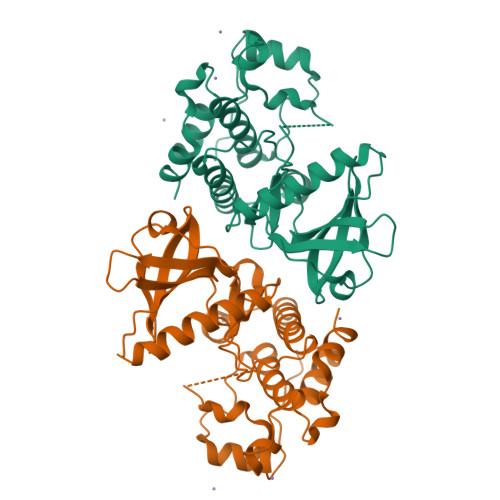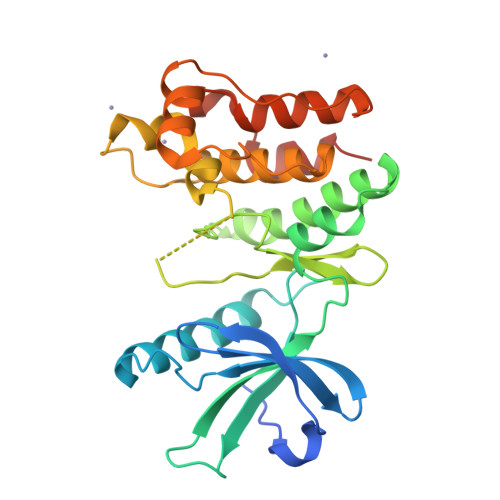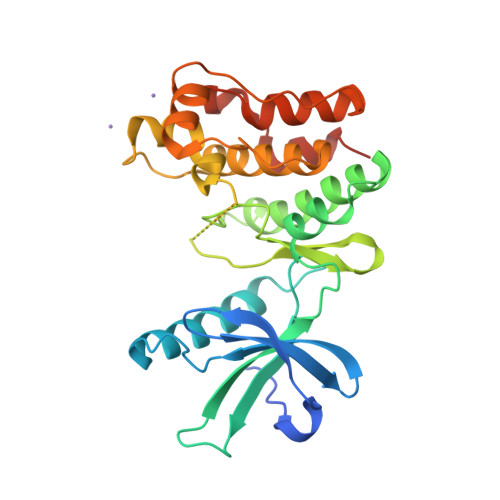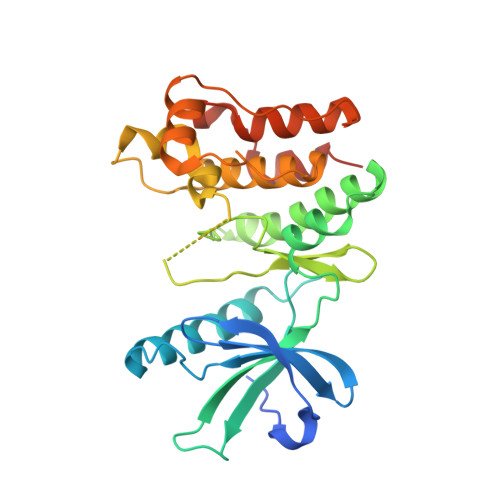Distinct pseudokinase domain conformations underlie divergent activation mechanisms among vertebrate MLKL orthologues.
Davies, K.A., Fitzgibbon, C., Young, S.N., Garnish, S.E., Yeung, W., Coursier, D., Birkinshaw, R.W., Sandow, J.J., Lehmann, W.I.L., Liang, L.Y., Lucet, I.S., Chalmers, J.D., Patrick, W.M., Kannan, N., Petrie, E.J., Czabotar, P.E., Murphy, J.M.(2020) Nat Commun 11: 3060-3060
- PubMed: 32561735
- DOI: https://doi.org/10.1038/s41467-020-16823-3
- Primary Citation of Related Structures:
6VBZ, 6VC0 - PubMed Abstract:
The MLKL pseudokinase is the terminal effector in the necroptosis cell death pathway. Phosphorylation by its upstream regulator, RIPK3, triggers MLKL's conversion from a dormant cytoplasmic protein into oligomers that translocate to, and permeabilize, the plasma membrane to kill cells. The precise mechanisms underlying these processes are incompletely understood, and were proposed to differ between mouse and human cells. Here, we examine the divergence of activation mechanisms among nine vertebrate MLKL orthologues, revealing remarkable specificity of mouse and human RIPK3 for MLKL orthologues. Pig MLKL can restore necroptotic signaling in human cells; while horse and pig, but not rat, MLKL can reconstitute the mouse pathway. This selectivity can be rationalized from the distinct conformations observed in the crystal structures of horse and rat MLKL pseudokinase domains. These studies identify important differences in necroptotic signaling between species, and suggest that, more broadly, divergent regulatory mechanisms may exist among orthologous pseudoenzymes.
Organizational Affiliation:
Walter and Eliza Hall Institute of Medical Research, 1G Royal Parade, Parkville, VIC, 3052, Australia.



















